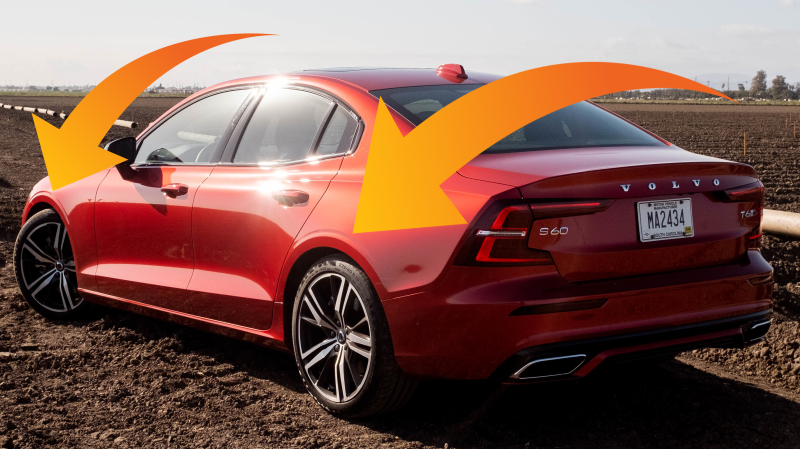
There’s an extremely common design trend that may have slipped by right under your nose, slowly taking over seemingly ever new car on the road, one by one. It’s only maybe a couple inches wide at most, and at all four corners of the car. It’s purpose a mystery, until now.
Alright, maybe that’s a little dramatic, but there is a very common design feature on the bodywork of many modern cars, and it’s the inch to maybe-two-inches of flat folded fender panel that circles the wheels, which was never part of the design on older cars.
Before I asked Volvo, a few members of the Jalopnik staff took shots at why cars have this flat section. Some hypothesized it was for aerodynamics. Others presumed it was designed to trick the eye into perceiving the vehicle’s wheels to be larger. Perhaps it was some sort of manufacturing shortcut.
Here’s a highly detailed graphic representation of the design element I’m talking about:

Advertisement
Enhance:

You see that? What’s that flat strip of body possibly for? To find out, I reached out to Volvo designer T. Jon Mayer, who I’d previously met on the first drive event for the new 2019 Volvo S60.
Advertisement
The initial purpose of including the flattened arch in the design is for structural support of the stamped panels. Apparently it’s as simple as that. Here’s how T. Jon explained it to me, edited for clarity:
“The wheel arch flat, which is the flat surface before the end of [the panel], which is common on most cars these days, helps to structurally support the metal and the stamping of that area. And then what we’ve added on top of that is what we call a little sickle, sort of a little undercut there of a feature, first shown on the Concept Coupe from 2013.”
“Where you have more definition in a crease in sheetmetal, it’s able to hold the shape more accurately. So if you do put a crease in something, generally it holds that shape better.”
“We do play around with those, trying to get those openings of the wheel arches to be quite circular looking, even though they are not quite circles. It’s kind of an optical illusion.”
Advertisement
So there you have it. The fenders on your car looks like it had a few measures shaved off to help with the structure of the panels, and add a little bit of a boost to the design profile of the car.
I tried to look back and spot the first sign of this design trend, and while I can’t nail it down to a model, it seemed to start showing up on cars at the turn of the century.
I’m not really sure I like the look of it, as it seems much more fluid and natural to have the panel come to a point, especially on sportier models like the new Porsche 911. But if automakers think it improves the structure of the bodywork, and if people don’t really complain about it, I guess it’s not hurting anybody.













